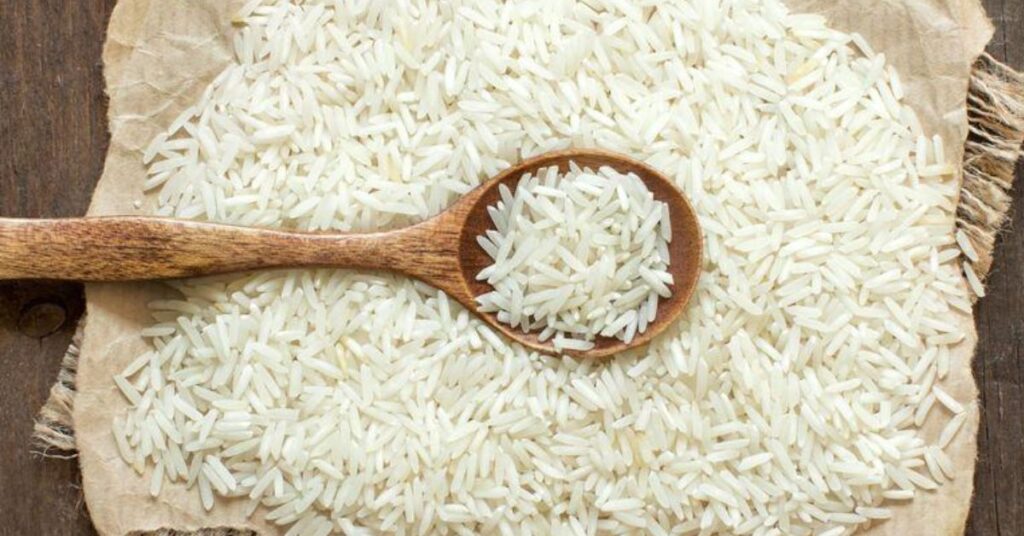Rice is a staple food for more than half the world’s population, providing an essential source of energy and nutrition. But did you know rice is also particularly susceptible to arsenic contamination? Arsenic, a naturally occurring element in soil and water, can accumulate within rice grains during cultivation. Long-term exposure to arsenic has been linked to serious health issues, including cancer and developmental problems.
Now consider this scenario alongside the growing threat of climate change. Rising temperatures, unpredictable flooding, and shifting soil conditions are altering the way rice is grown. Could these changes make the problem of arsenic in rice even worse? The answer is both fascinating and alarming.
This post explores how climate change influences arsenic uptake in rice, why this matters for human health, and what can be done to mitigate the risks.
| Factor | Impact on Arsenic Uptake in Rice | Explanation |
|---|---|---|
| Rising Temperatures | Increased arsenic uptake | Higher temperatures can enhance microbial activity, releasing more arsenic into soil. |
| Flooding | Elevated arsenic availability in soil | Flooded conditions promote the release of arsenic from soil particles into water. |
| Soil Type and Composition | Varies arsenic mobility | Different soil types affect arsenic binding, with looser soils increasing its movement. |
| Water Management Practices | Can either mitigate or exacerbate the issue | Proper irrigation techniques, such as alternate wetting and drying, can reduce arsenic uptake. |
| Rice Variety | Variability in absorption levels | Some rice varieties are naturally less likely to absorb high levels of arsenic. |
|
Climate Change and Rice Cultivation
Rice production is uniquely tied to its environment, making it incredibly vulnerable to the effects of climate change. Here are three ways changing climate patterns impact rice cultivation directly.
1. Increased Flooding
Rice is often grown in fields flooded with water, also known as paddies. While this method helps control weeds and pests, it also creates conditions where arsenic becomes more bioavailable. Under anaerobic (oxygen-free) conditions, arsenic trapped in soil particles dissolves more easily into water, increasing the likelihood that rice plants absorb it.
Climate change is already leading to more frequent and severe flooding in many rice-growing regions. For example, Bangladesh, one of the top rice-producing countries, has seen its floodplain expand due to extreme monsoons and rising sea levels. More flooding means more opportunities for arsenic to contaminate rice crops.
2. Rising Temperatures
Temperature influences every stage of rice growth, from seeding to harvest. Unfortunately, higher temperatures also mean increased evapotranspiration (loss of water from soil and plants), which can concentrate arsenic in the water left behind. This can raise arsenic levels in soil and make it easier for rice plants to absorb the toxin.
A 2020 study published in Nature Communications revealed that the combination of higher temperatures and water stress resulted in a higher concentration of inorganic arsenic in rice grains. For communities dependent on rice, these findings highlight a looming public health challenge as the planet continues to warm.
3. Altered Soil Chemistry
The chemistry of soil is intrinsically tied to the broader climate. Climate change can introduce new variables that alter the soil environment, including salinity increases (from sea level rise) and longer periods of soil saturation. These changes can affect how arsenic binds to soil particles, sometimes making it more available for plants to absorb.
Some research suggests that salt-stressed soils, common in areas suffering from sea-level rise, may magnify arsenic uptake in rice. If these trends continue, countries located in coastal areas may face heightened risks of contaminated rice.
How Rice Absorbs Arsenic
Rice is uniquely efficient at absorbing arsenic compared to other crops. Why? The answer lies in how it grows.
1. Rice Thrives in Flooded Fields
Water-logged soil, common in rice paddies, creates the perfect conditions for arsenic to break down into a more readily absorbed form. Rice plants naturally absorb silicon from the soil to build strong stems and seeds—but arsenic behaves chemically like silicon. This means rice absorbs arsenic inadvertently through its roots.
2. Arsenic Transport Within the Plant
Once arsenic is taken up from the soil, it travels through the plant’s vascular system, eventually accumulating in its edible grains. This process happens naturally, but environmental factors (like those driven by climate change) can speed it up.
3. Synergy Between Water Stress and Flooding
It’s not just water logging that matters. Even alternate wetting and drying cycles, a common water management technique, can have unexpected effects on arsenic levels in rice. The shifts between flooded and dry conditions can release additional arsenic from buried layers of soil, increasing overall contamination.
Why Arsenic in Rice is Dangerous
Arsenic in rice might seem like a remote issue, but it impacts millions globally. Here are some of the most critical health risks associated with contaminated rice consumption.
Cancer
Regular exposure to even low levels of inorganic arsenic (the most toxic form) has been linked to skin, bladder, and lung cancers. Studies show that populations relying heavily on rice as a dietary staple are especially at risk.
Developmental Issues in Children
For infants and young children, consuming rice-based products like cereals and snacks can be particularly harmful as their smaller bodies process the same levels of arsenic more acutely. Prolonged exposure is known to impair cognitive development and growth.
Cardiovascular and Metabolic Disorders
Chronic arsenic exposure increases the risk of heart disease, diabetes, and hypertension. These conditions, combined with arsenic-linked cancers, make this a severe public health concern for rice-dependent regions.
What Can Be Done? Mitigation Strategies
While the risks are daunting, actions can be taken to lower arsenic uptake in rice. Solutions range from farming techniques to consumer choices.
1. Water Management
Flooding fields less frequently is one of the most effective strategies for keeping arsenic levels low. “Alternate wetting and drying” techniques show promising results. By allowing soil to dry periodically, farmers can reduce how easily arsenic dissolves into water.
2. Soil Remediation
Adding soil amendments such as iron or silicon compounds is another strategy. These amendments can help immobilize arsenic, making it less bioavailable to rice plants. Exploring low-cost methods like adding manure or biochar could also bring this strategy within reach for small-scale farmers.
3. Breeding Arsenic-Resistant Rice Varieties
Researchers are developing rice strains that absorb less arsenic without compromising yield. Some studies suggest that traditional or heirloom rice varieties process arsenic differently. Scaling up their production could help reduce risk in high-contamination regions.
4. Eating Patterns and Preparation
For consumers, rinsing rice thoroughly and cooking it in excess water can remove a portion of the arsenic content. According to FDA research, cooking rice in a large volume of water (about six cups for every one cup of rice) and draining the excess can cut arsenic levels by as much as 60%.
5. Advocacy and Policy Changes
Government intervention is critical. Global health organizations can push for stricter arsenic thresholds in food, while local governments invest in infrastructure to improve water quality and soil testing programs.
An Issue That Demands Urgent Attention
Climate change is reshaping the way we grow and consume food, and the case of arsenic in rice is a perfect example of how interconnected environmental and public health challenges have become. For millions who depend on rice for sustenance, the stakes are high.
Tackling this issue requires coordinated action between researchers, governments, and consumers. Whether through adopting new farming practices, investing in arsenic-resistant rice varieties, or becoming an informed shopper, everyone has a role to play.
Rice has sustained humanity for thousands of years. With the right approach, it can remain a safe and nutritious staple for generations to come.
References
- Smith, P., & Duxbury, J. M. (2009). “Arsenic in rice and implications for food safety.” Environmental Science & Technology, 43(15), 5578-5583. DOI:10.1021/es802684p.
- International Rice Research Institute (IRRI). (2022). “Arsenic in rice – Challenges and solutions.” Retrieved from [https://www.irri.org](https://www.irri.org).
- Meharg, A. A., & Zhao, F. J. (2012). Arsenic & rice. Springer Science & Business Media.
- United Nations Food and Agriculture Organization (FAO). (2021). “Climate change and its impact on rice cultivation.” Retrieved from [http://www.fao.org](http://www.fao.org).
- World Health Organization (WHO). (2016). “Exposure to arsenic: A major public health concern.” Retrieved from [https://www.who.int](https://www.who.int).

Dominic O. McCoy is a passionate writer who loves crafting engaging and informative blogs on a wide range of topics. With a deep curiosity and a knack for storytelling, he explores everything from lifestyle and technology to business and home improvement. Whether breaking down complex ideas or sharing practical tips, McCoy aims to deliver valuable content that resonates with readers. When he’s not writing, he enjoys learning about new trends and expanding his knowledge to bring fresh perspectives to his work.




























































































